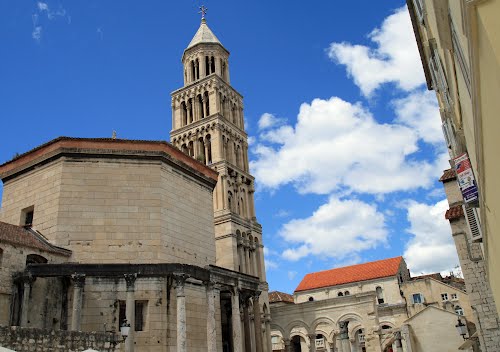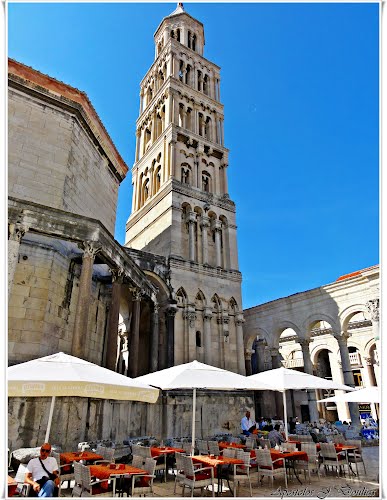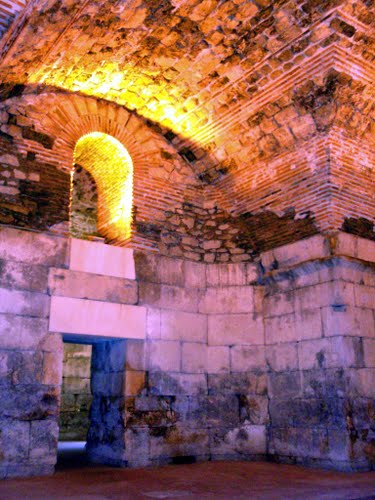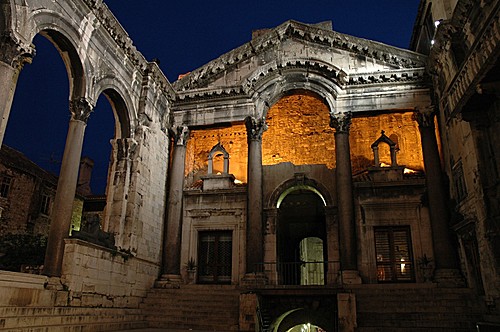Diocletian's Palace is an ancient palace built by the Roman emperor Diocletian at the turn of the fourth century AD, that today forms about half the old town and city center of Split, in Croatia. While it is referred to as a "palace" because of its intended use as the retirement residence of Diocletian, the term can be misleading as the structure is massive and more resembles a large fortress: about half of it was for Diocletian's personal use, and the rest housed the military garrison.
Diocletian built the massive palace in preparation for his retirement on 1 May 305 AD. It lies in a bay on the south side of a short peninsula running out from the Dalmatian coast, four miles from Salona, the capital of the Roman province of Dalmatia. The terrain slopes gently seaward and is typical karst, consisting of low limestone ridges running east to west with marl in the clefts between them.
Cultural heritage
In November 1979 UNESCO, in line with the international convention on cultural and natural heritage, adopted a proposal that the historic city of Split built around the Palace should be included in the register of World Cultural Heritage.
In November 2006 the City Council decided to permit over twenty new buildings within the palace (including a shopping and garage complex), although the palace had been declared a UNESCO World Heritage Monument. It is said that this decision was politically motivated and largely due to lobbying by local property developers. Once the public in 2007 came aware of the project, they petitioned against the decision and won. No new buildings, shopping center or the underground garage was built.
The World Monuments Fund has been working on a conservation project at the palace, including surveying structural integrity and cleaning and restoring the stone and plasterwork.
The palace is depicted on the reverse of the Croatian 500 kuna banknote, issued in 1993.









